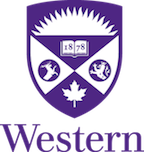Research Details
In various models of study (exercise, aging, disease, neuromuscular fatigue) we use a combination of mainly electrophysiologic and anatomic measures to investigate questions related to the relationship between the output of the spinal motoneuron and muscle contractile properties.
Primary techniques in my lab include: surface and indwelling electromyography (EMG), electrical muscle stimulation, and measures of static and dynamic voluntary muscle strength. With established collaborations we can supplement our studies using magnetic resonance (MR) imaging and MR spectroscopy to investigate relevant measures of muscle anatomy and biochemistry. Other techniques available to complement some studies include muscle biopsy, ultrasound imaging of muscle, measures of blood flow and muscle oxygenation, and simple relevant cardiovascular measures. As a member of the Canadian Centre for Activity & Aging, many studies have explored neuromuscular exercise physiology with adult aging.
Some current research initiatives include studies focusing on: 1) comparisons of isometric and dynamic muscle function at rest and during fatigue, 2) neuromuscular fatigue and recovery from eccentric muscle exercise in young and old humans and in response to exercise training, 3) the assessment of velocity and power during dynamic tasks, 4) motor unit properties during dynamic movements, and 5) relationships between muscle function, muscle mass, bone density, and muscle metabolism during various exercise tasks.
Research and students have been funded by: NSERC, CIHR, ACSM, Provincial and Federal scholarships, and local University and Hospital grants.
- Home | Research Details | Members | Facilities | Publications | Alumni | Photos
- Educational Opportunities | Volunteer Participants | Contact Information
© 2011 The Neuromuscular Lab
Web Design by Charlie Pettypiece
charlie.pettypiece@gmail.com
